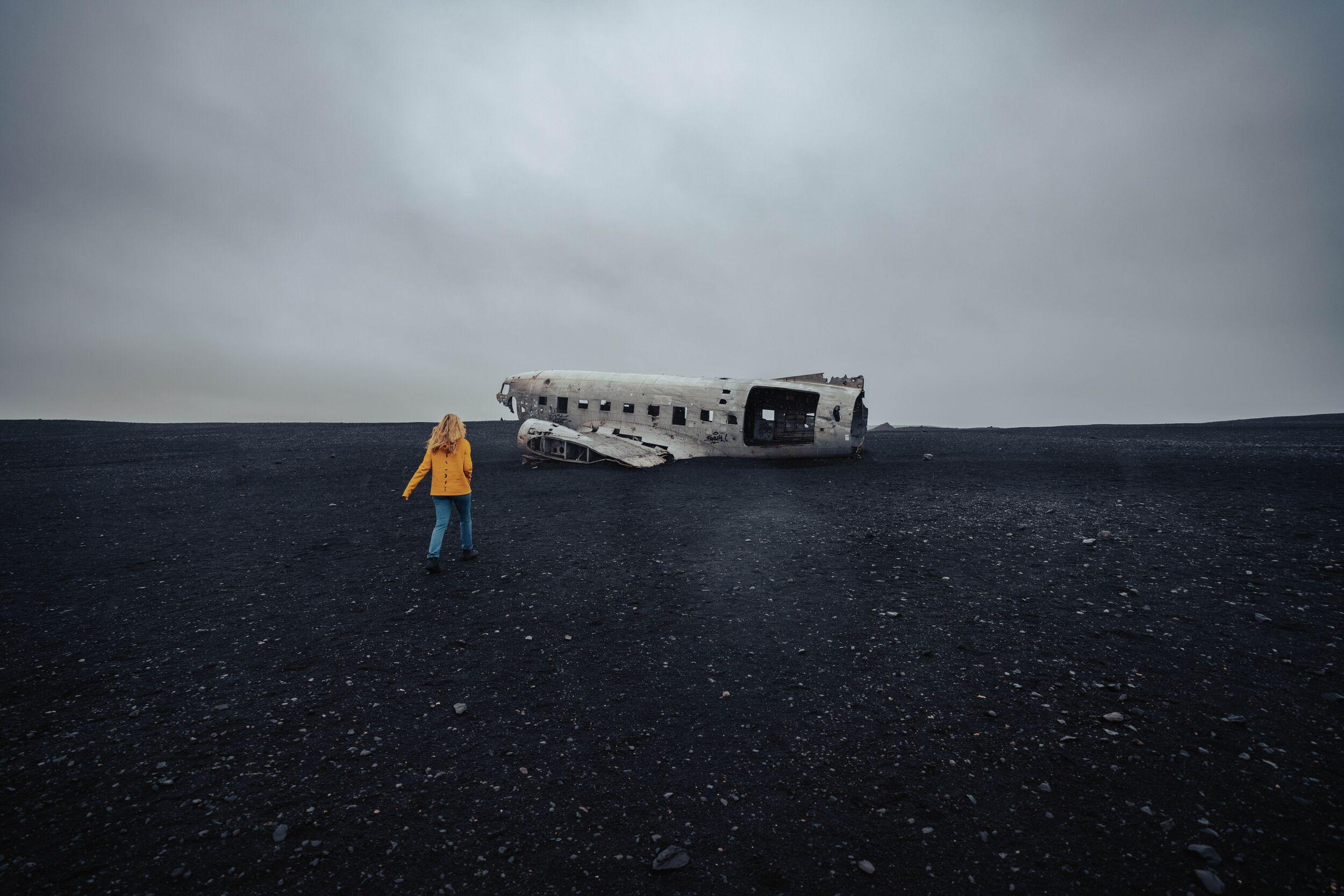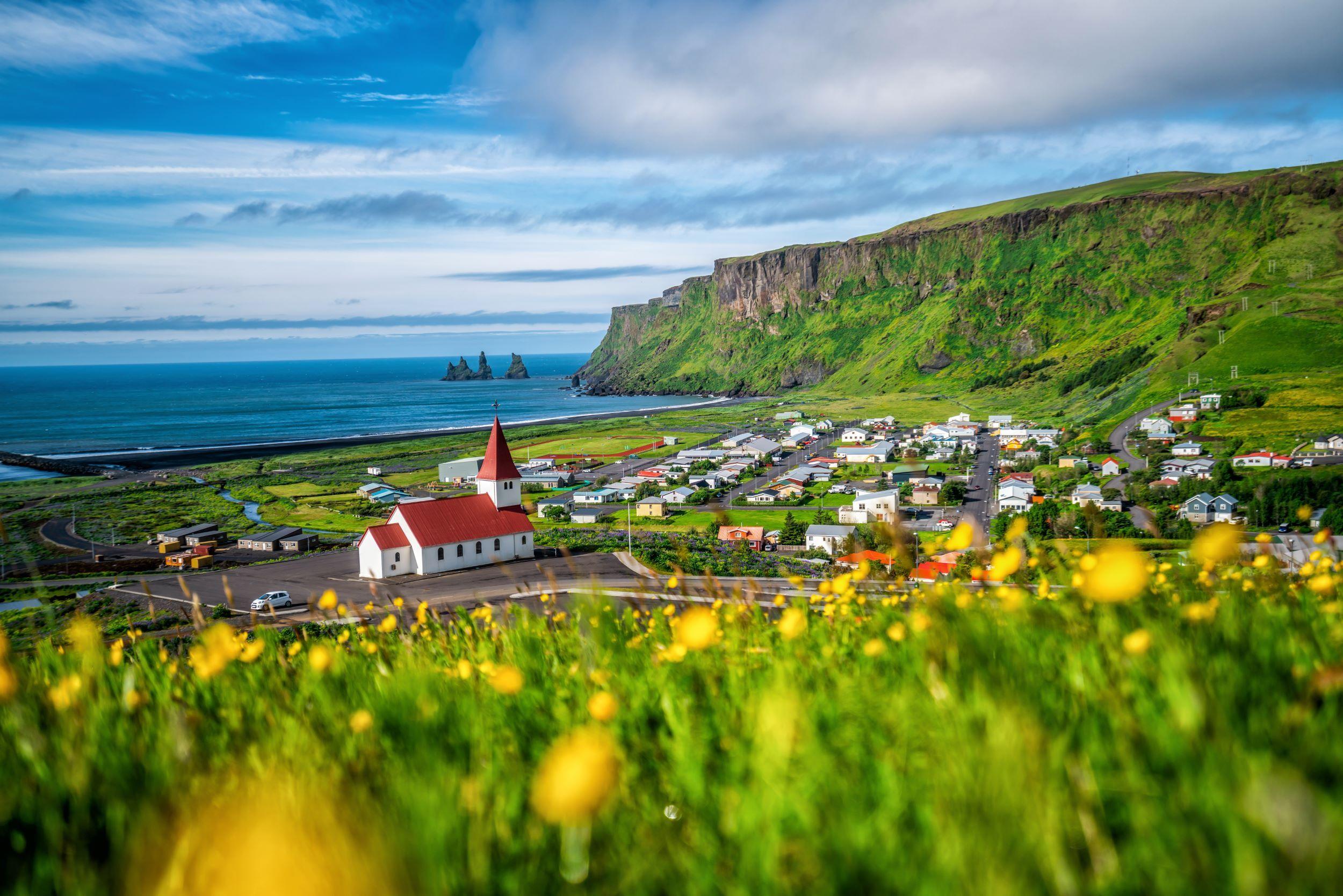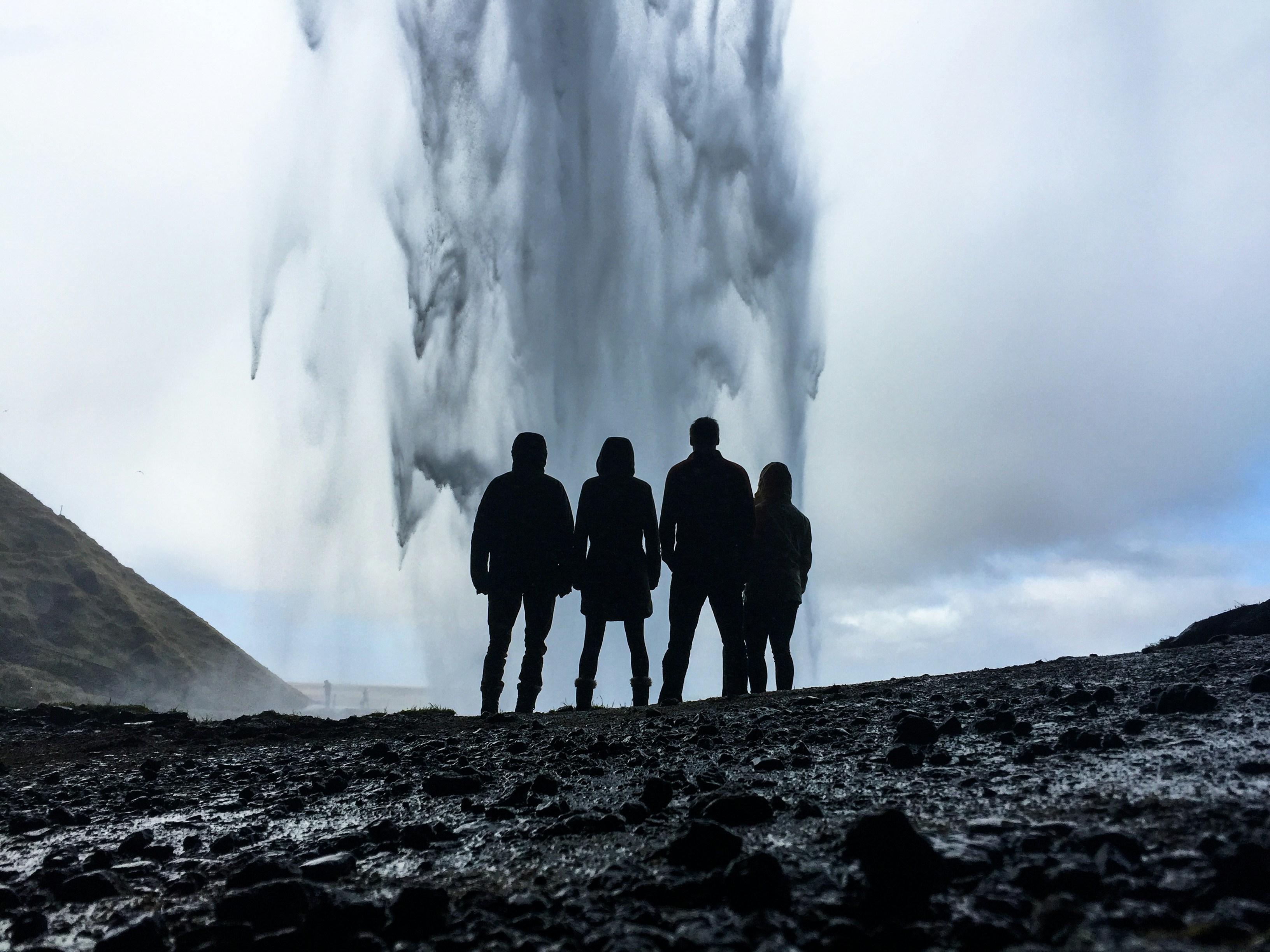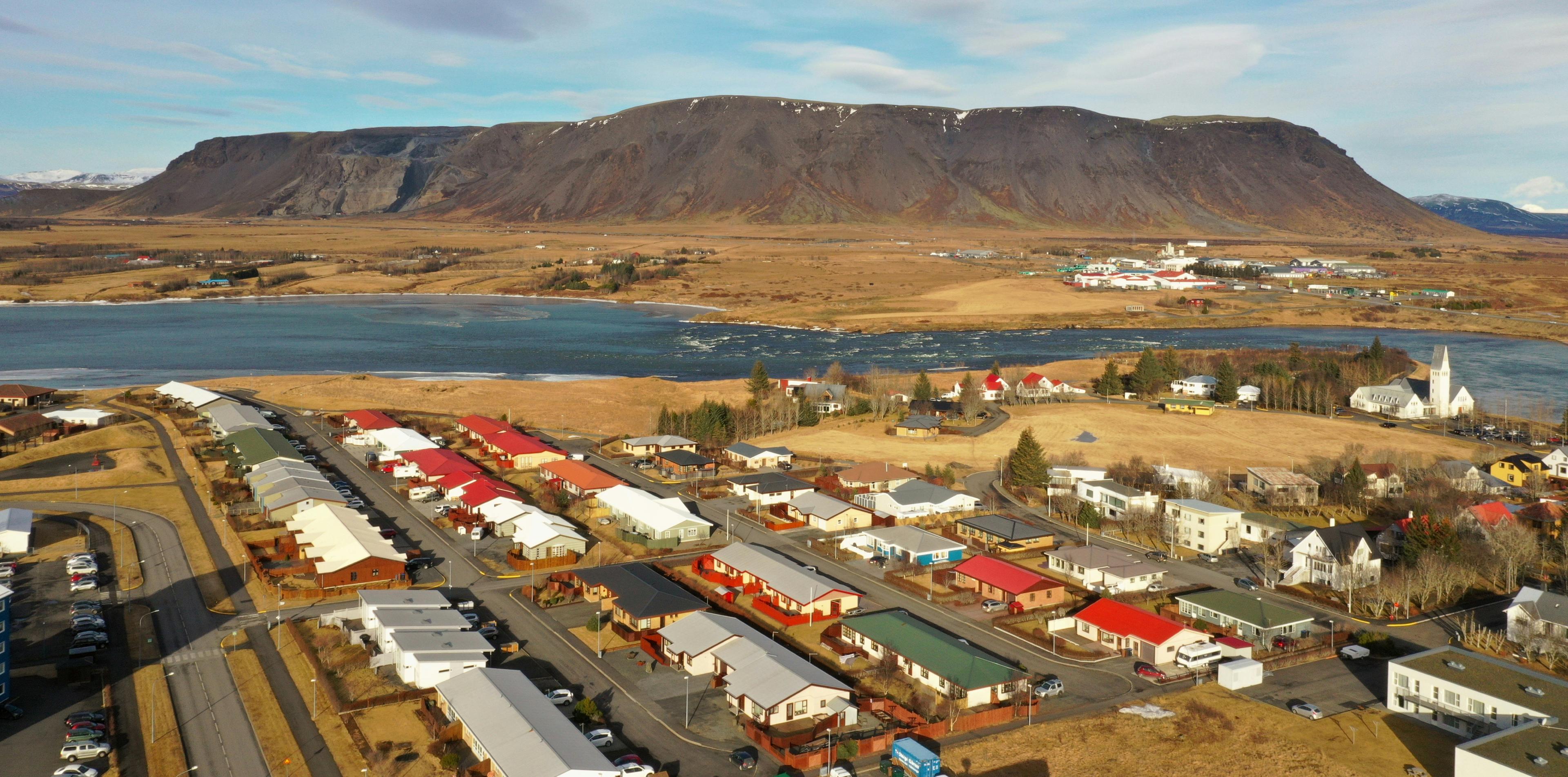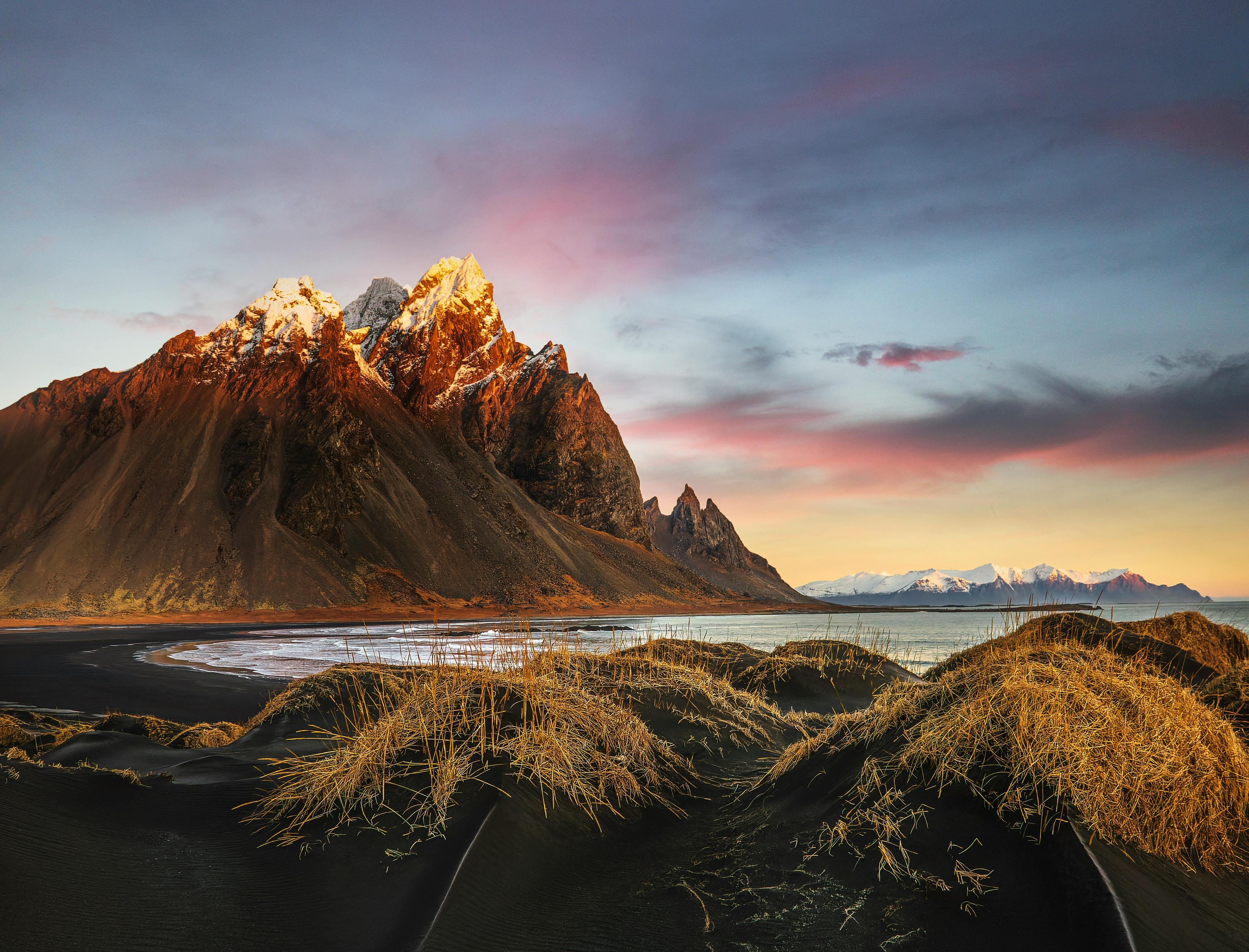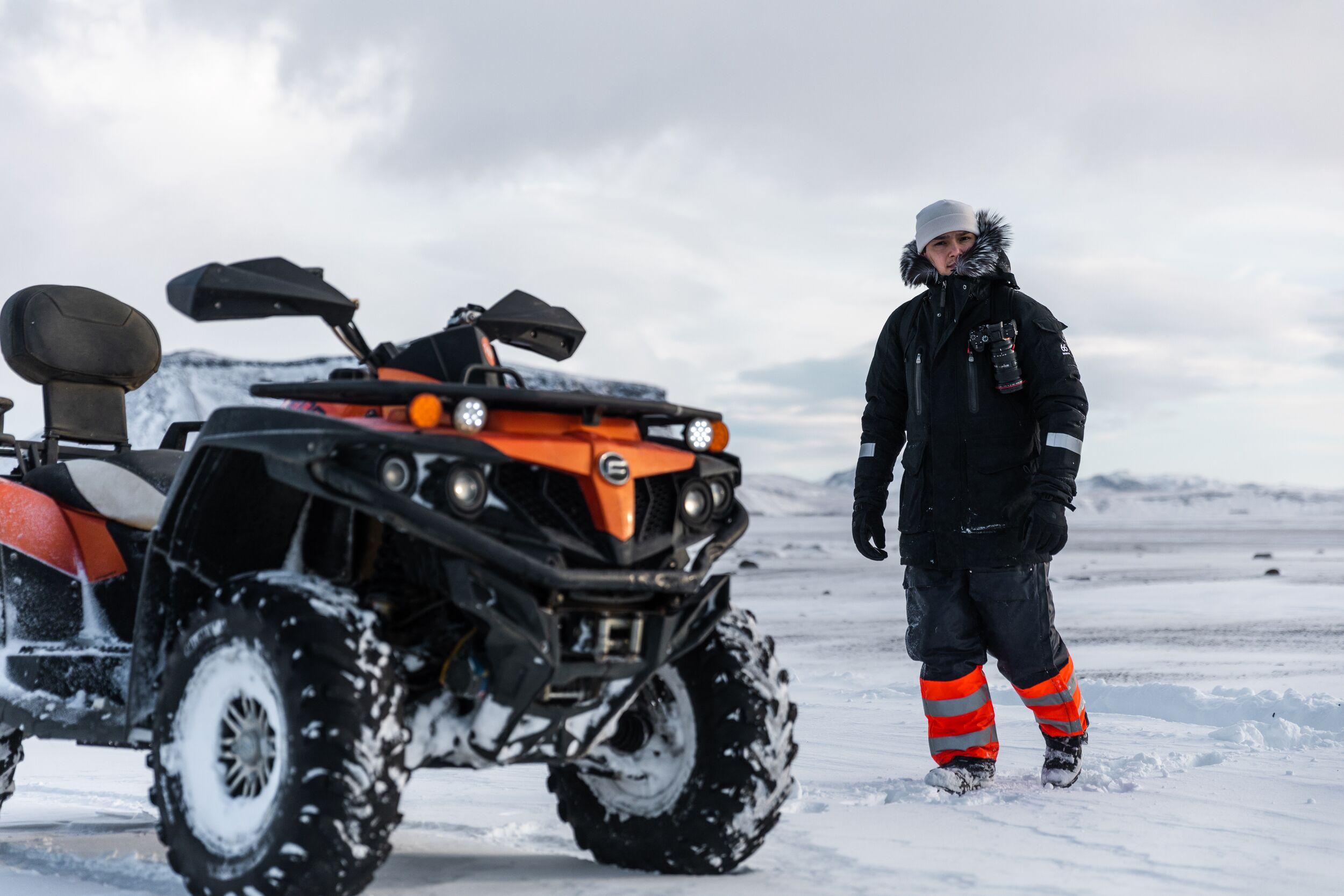The Mysterious Solheimasandur Plane Wreck
Table of Contents
The Intriguing History of the DC-3 Plane Wreck on Solheimasandur
During World War II, American forces established a military presence in Iceland. This deployment was part of a broader strategy to secure vital North Atlantic sea lanes and to prevent Germany from establishing a foothold in the region.
Iceland joined NATO in 1949, and the U.S. Air Force established its Air Base Group at Keflavik Airport in 1951, later becoming our international airport, the ultimate gateway to the world for Iceland. The U.S. Air Force maintained a presence there until 2006.
In addition to the Keflavík base, the U.S. Navy operated four radar stations in Iceland, including one near Hornafjörður in the east. These stations, primarily for aviation monitoring and submarine detection, required regular supplies.
Watch this Inspirational Video about the Iconic Plane Wreck
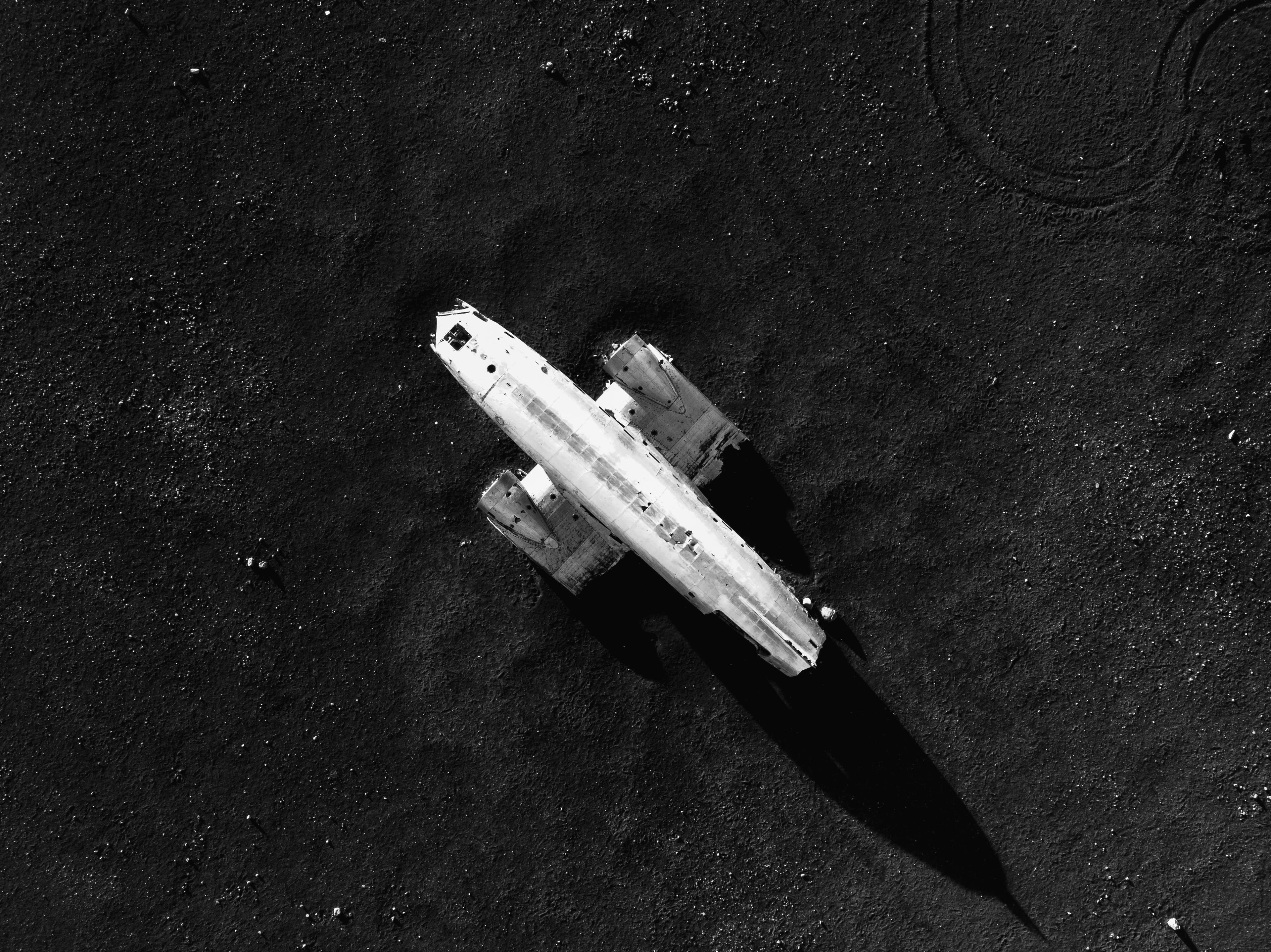
On the fateful day of November 21, 1973, the day before Thanksgiving, an aircraft was on a mission to transport supplies from Keflavik to the American Army station.
While official US records claim that the crash occurred on November 24, Icelandic newspaper Morgunblaðið reported the event in its November 22 edition, indicating that the crash actually happened on November 21.
Captain James Wicke was flying the plane when severe weather hit. Temperatures dropped to -10 °C or 14°F, and winds reached 96 km/h or 60 mph, causing the engines to freeze and fail amid heavy turbulence and fog. The crew, unable to see outside, feared crashing into a mountain.
As they flew over Vatnajökull, Wicke sent a mayday signal. The distress call prompted immediate action, with three Phantom jets and two helicopters dispatched and nearby ships alerted.
Despite the dire circumstances, the 26-year-old Lieutenant Gregory Fletcher, still in training and had only flown 21 hours in a C-117, made a decisive move.
Instead of allowing the plane to crash into the mountains, he navigated it south, intending to land in the Atlantic Ocean. While this decision posed risks, the chances of survival were higher than a catastrophic collision with the mountain.
As the plane emerged from the clouds, a Thanksgiving miracle unfolded before the crew's eyes—a vast, pitch-black beach, perfectly flat and stretching for miles, offering an unforeseen glimmer of hope.
Seizing the opportunity, they made an emergency landing on the frozen beach of Sólheimasandur. Despite the damage the aircraft suffered, it stopped just six meters short of the sea. Miraculously, not a single crew member was injured.
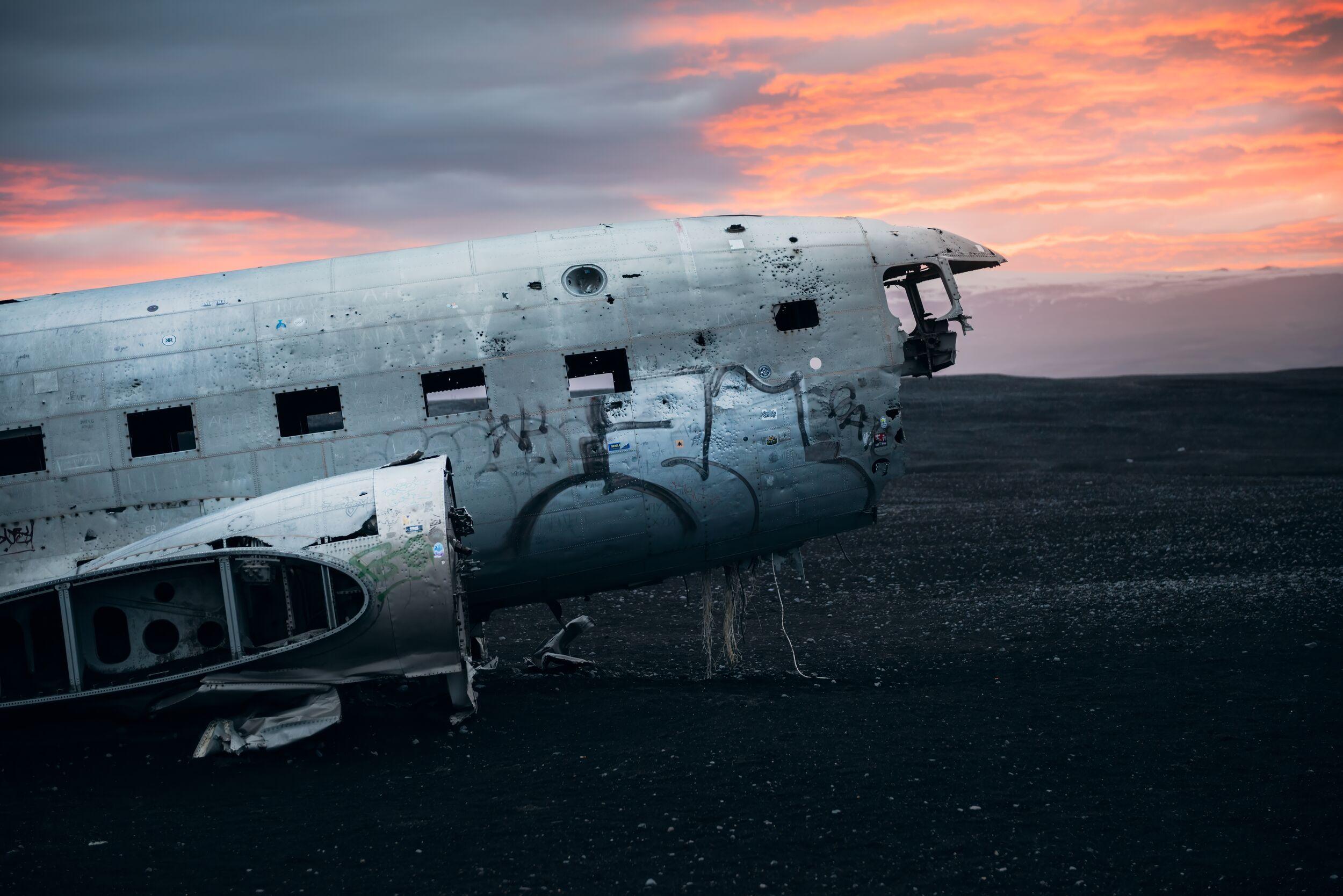
The Aftermath: An Unexpected Attraction
Following the crash, it was discovered that holes in the aircraft's fuel tanks were the cause of the sudden fuel shortage. After the crew was rescued and given a clean bill of health, the US Navy recovered any valuable items from the wreckage.
The damaged aircraft was left at the crash site. Under the Status of Forces Agreement between Iceland and the U.S., if an American plane crashed in Iceland, the U.S. would cover 85% of recovery costs, with Iceland responsible for the actual removal. However, it would only occur if a landowner filed a claim to remove the wreck, but that never happened.
Over time, the wreck became a poignant reminder of this dramatic event and an enigmatic symbol of human triumph over adversity.
Today, the Solheimasandur Plane Wreck, set against the stark beauty of the Icelandic landscape, draws in thousands of visitors from around the globe, adding an unexpected attraction to this naturally blessed land.
Iconic Plane Wreck in the Media: From Bieber to Bollywood
The isolated yet strikingly beautiful Solheimasandur Plane Wreck hasn't gone unnoticed by the media either. It was featured in the 2015 music video 'I'll Show You' by Justin Bieber, and also in 'Dilwale', a renowned Bollywood film, besides making appearances in several advertisements. The wreckage's unique setting has indeed proven to be a significant artistic allure.
Justin Bieber - I'll Show You
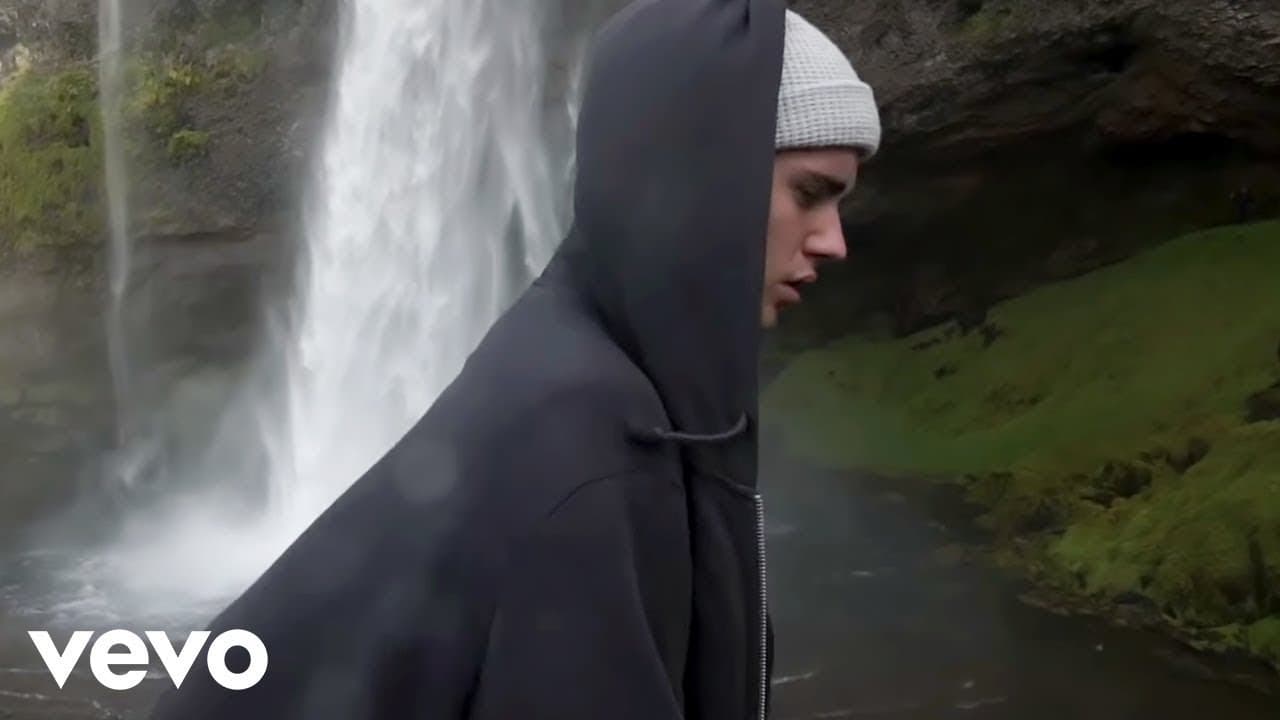
Where Is Solheimasandur?
Situated on the coast of South Iceland, right off the Ring Road, Sólheimasandur is approximately 164 kilometres (102 miles) from Reykjavík. The Dyrhólaey Cape and Skógafoss waterfall, two other fantastic tourist spots, are just about 15 kilometres (9 miles) away from the site.
Navigating Your Way to the Solheimasandur Plane Wreck
Making your way to the Solheimasandur Plane Wreck isn't just about reaching the destination; it's also about savouring the journey. Whether you're driving from Reykjavik or from the East, you'll pass several awe-inspiring attractions like the Seljalandsfoss waterfall, the renowned stratovolcano Eyjafjallajokull, the Jökulsárlón Glacier Lagoon, and Diamond Beach.
As you drive along the road between Skógafoss and Dyrhólaey, you may notice a spot with many cars parked. It may seem like it is in the middle of nowhere, but this is the parking lot by Solheimasandur.
To visit the plane wreck, prepare for a long walk, taking up to an hour each way. It's an invigorating stroll over 3.5 kilometres (2 miles), where you'll experience the vast expanse of volcanic sand and the striking isolation that embodies the true essence of Iceland.
Tours to the plane wreck
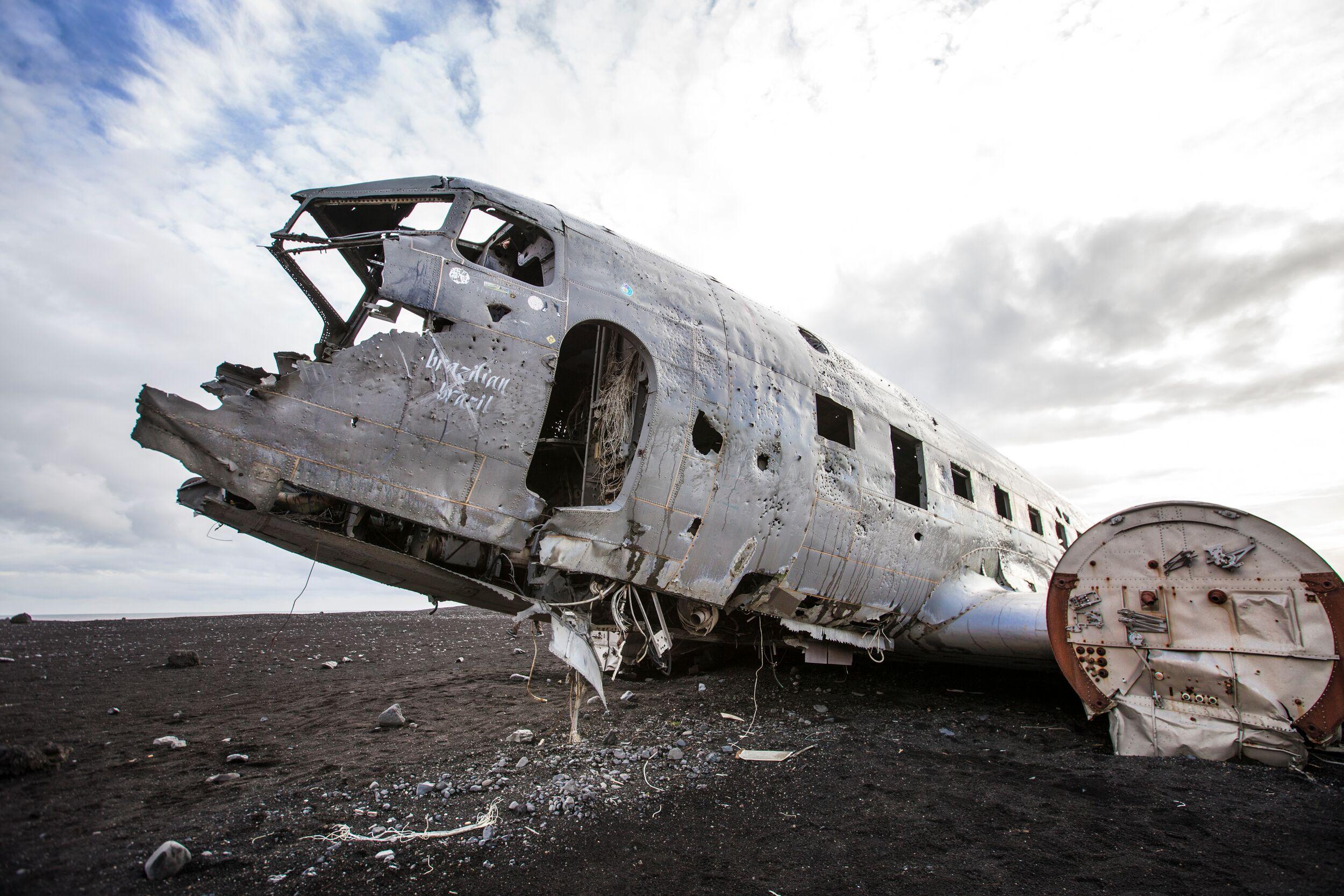
Plane Wreck Shuttle
Hop aboard the Plane Wreck shuttle for the 4 km (2.5 mi) to the DC-3 aeroplane wreckage on the hauntingly beautiful black sand beach of Sólheimasandur. The shuttle is available seven days a week between 10:00 and 17:00 and takes just 10-15 minutes to get to the plane!
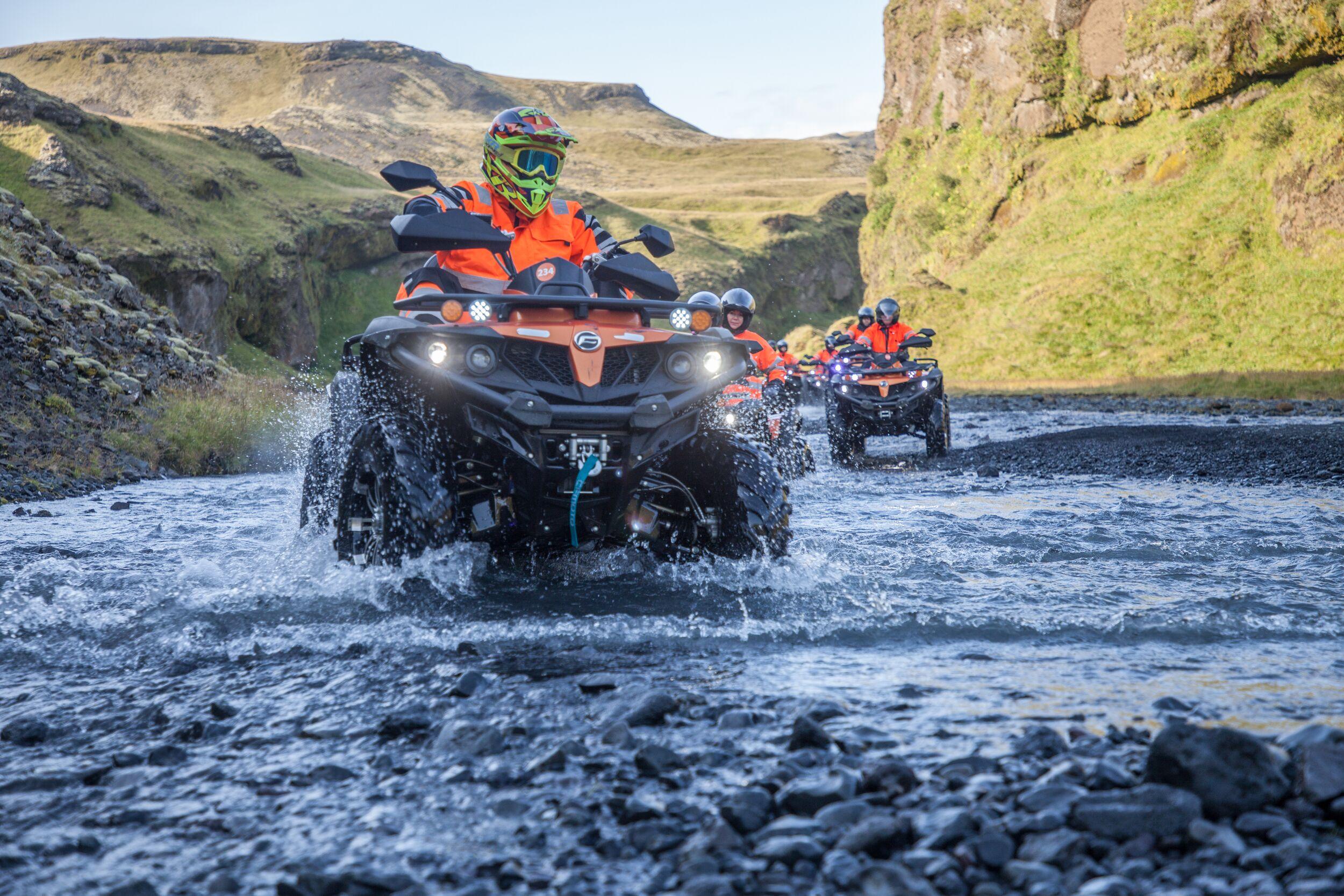
ATV Quad Express on Sólheimasandur
Welcome to an extraordinary ATV experience that transcends the ordinary – our Quad Bike Adventure awaits at the Mýrdalsjökull Base!
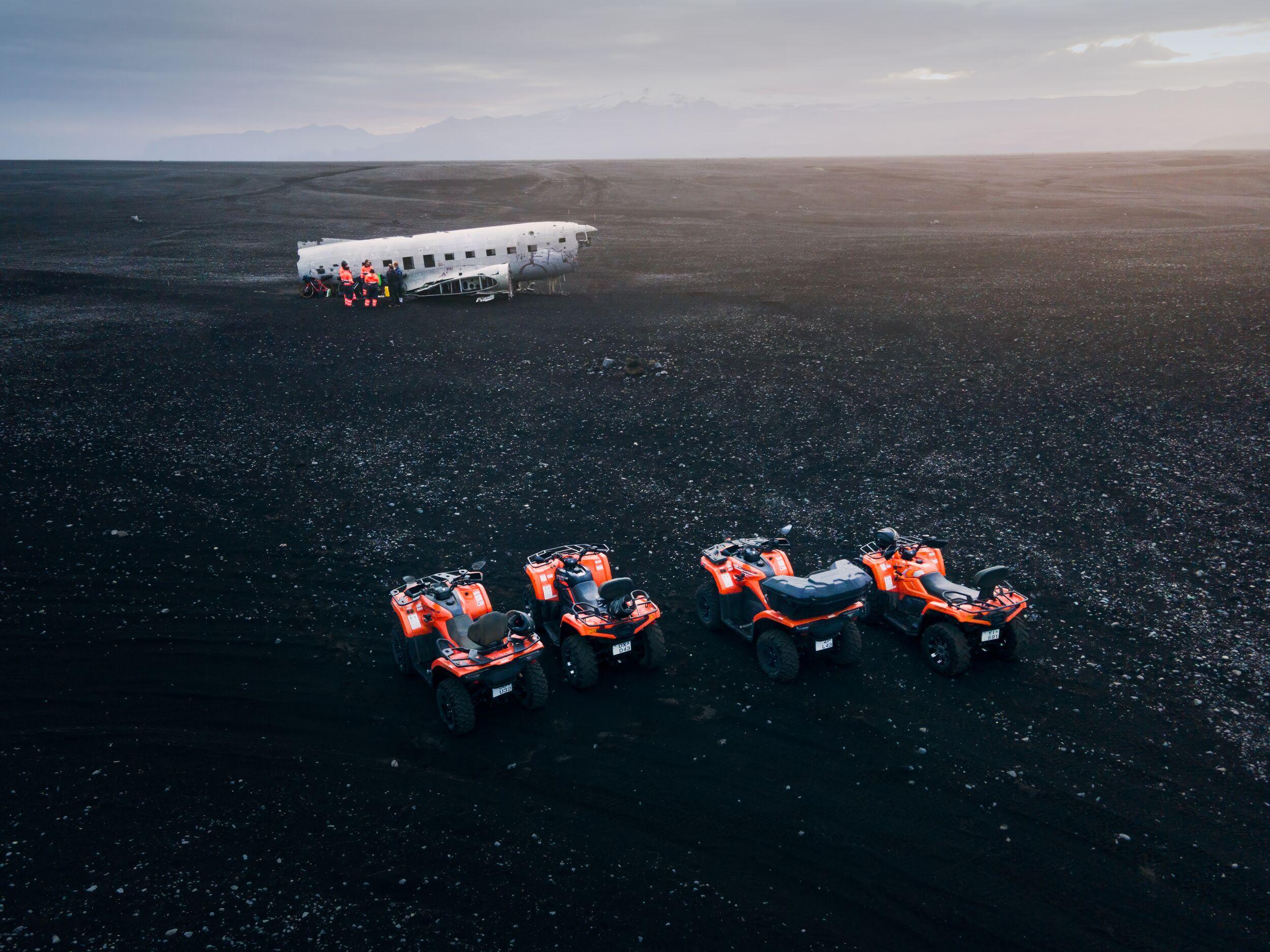
ATV - Black Beach Safari and the Plane Wreck
Looking for an active tour in south Iceland? Get an adrenaline rush while riding an ATV on vast black sand beaches! This thrilling 2-hour guided tour includes breathtaking views of the surrounding area and a visit to the Sólheimasandur Plane Wreck.
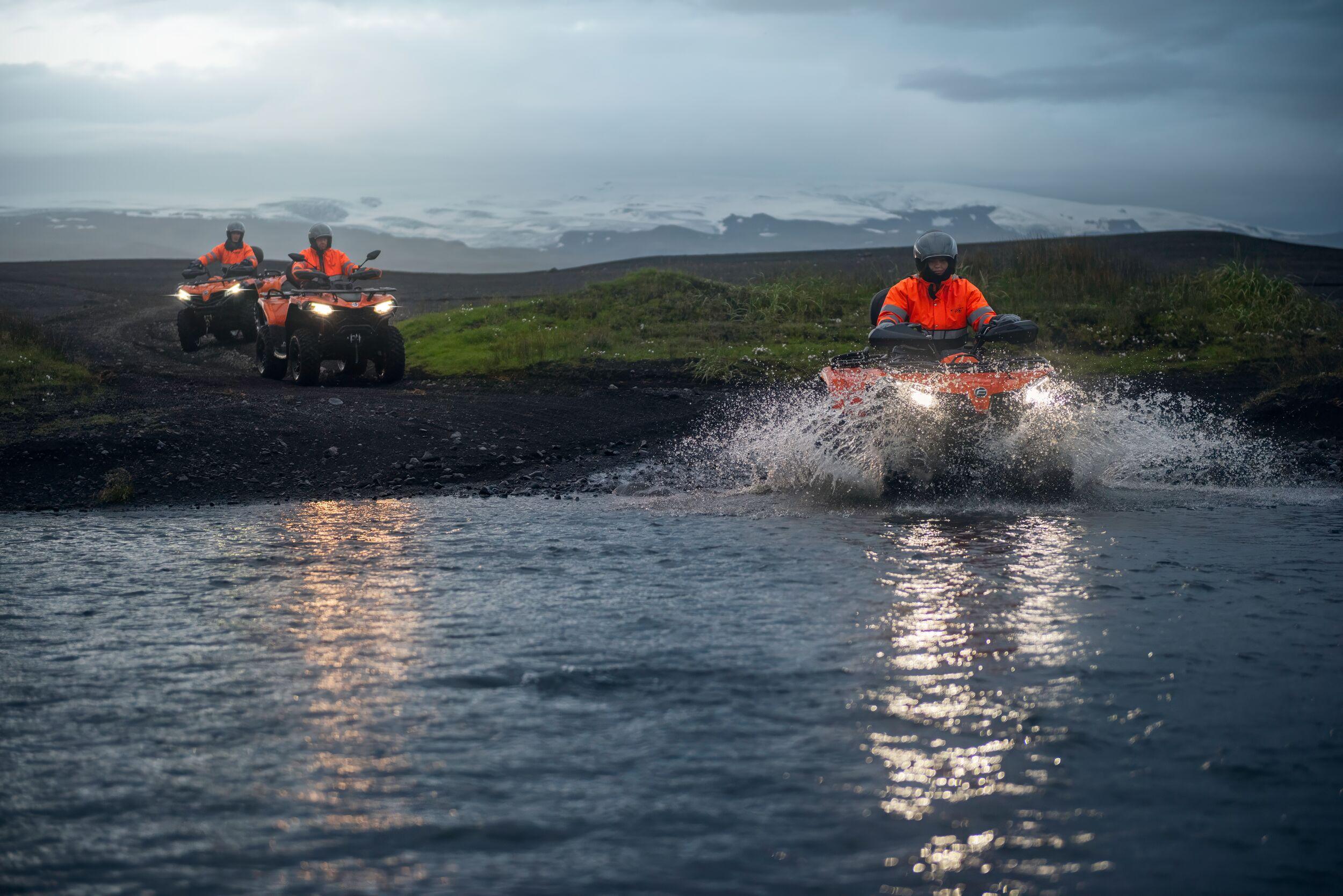
South Coast & Sólheimasandur DC-3 Plane Wreck Black Beach ATV Adventure
Explore Iceland's legendary South Coast, where the thundering cascades of Seljalandsfoss and Skógafoss await. Amidst the shadow of the mighty Katla volcano, feel the thrill of an ATV ride across scenic valleys and black sand expanses, leading you to the iconic DC-3 plane wreck on Sólheimasandur beach. A harmonious blend of tranquil vistas and heart-pounding adventure!

Essential Tips for Your Visit to the Wreckage
While the walk to the Solheimasandur Plane Wreck can be a thrilling experience, the ever-changing Icelandic weather can significantly influence the journey.
The best time to visit the Solheimasandur Plane Wreck is during the Icelandic summer, between May and August, due to milder weather and longer daylight hours.
In good weather, the walk from the parking lot to the wreck is relatively straightforward and manageable for most fitness levels. The flat black sand beach provides an easy path, making it an enjoyable trek for seasoned hikers and casual walkers alike.
The breathtaking landscape around you with the contrasting starkness of the black sand and the Icelandic sky creates a mesmerising backdrop for your journey.
However, Iceland's weather is known for its unpredictable nature. The walk can become a challenge if you're caught in sudden fog or rain.
Visibility can drop dramatically in a matter of minutes, transforming the otherwise easy trek into a navigation puzzle. In such conditions, the black desert becomes a vast, disorienting expanse, making it almost impossible to track back to your path if you lose your way.
Before embarking on your journey, it's essential to check the local weather forecast and take heed of any advice or warnings issued by the local authorities. Dress appropriately, layering your clothes to adjust to changing conditions, and carry essential supplies such as water, snacks, and a reliable navigation tool.
Hiking to Solheimasandur Plane Wreck in Winter: Not Recommended
We advise against attempting this hike in the winter months. The harsh Icelandic winter brings not only freezing temperatures but also regular snowstorms, which can cover the path entirely.
The visibility during these storms is near-zero, making the trek dangerous and the plane wreck almost inaccessible. The safety and well-being of visitors are paramount, so it's best to plan your visit outside the winter season.
Remember: there are guided transportation services available all year round. Take an exciting ATV tour or the shuttle bus to the plane wreck to ensure a fun and safe experience. Read more about ATV and Buggy adventures on Sólheimasandur.
Questions and Answers about Solheimasandur Plane Wreck
The Solheimasandur Plane Wreck is approximately 164 kilometres from Reykjavik, Iceland's capital city. This journey, primarily on Route 1 (the Ring Road), usually takes about 2 hours and 15 minutes by car, but it's recommended to take your time and enjoy the majestic Icelandic scenery along the way.
While you can certainly drive close to the Solheimasandur Plane Wreck, vehicles are not allowed directly on the beach. The local authorities have set up a designated parking area off Route 1. From there, you can enjoy a scenic, albeit lengthy, walk to the plane wreck. Alternatively, shuttle bus services and ATV tours are available for a more effortless journey.
The Solheimasandur Plane is an iconic Douglas DC-3 aircraft that met its unexpected end in 1973. Stranded on the black beach of Sólheimasandur, after running out of fuel during a storm, the plane was abandoned and is now a unique symbol of a time long past.
Visiting the Solheimasandur Plane Wreck is entirely free of charge. The only associated cost is the parking fee at the designated lot, which can be paid online or via a mobile application.
The crash of the DC-3 aircraft on Sólheimasandur beach was mainly due to severe weather conditions and a critical fuel shortage. The story goes that ice had built up on the aircraft's exterior, leading to a drop in temperature and causing engine failure.
The walk from the designated parking lot to the Solheimasandur Plane Wreck is approximately 4 km, taking around 45-60 minutes each way. It's a journey through the awe-inspiring Icelandic landscape, which can be enjoyed at your own pace.
Booking in advance is always recommended. To ensure your spot and for greater flexibility, we advise booking your ticket as early as possible. We offer a 100% refund for cancellations made more than 24 hours before the scheduled departure, giving you peace of mind if your plans change.
Please be at the parking lot at least 5 minutes before the bus's scheduled departure time. This ensures a comfortable start to your journey and helps avoid any last-minute rushes.
Sólheimajökull Glacier walking is possible all year round, so you can visit when the sun shines in summer or in deepest, coldest winter. The benefit of visiting Sólheimajökull in summer is that the long hours of daylight allow for longer adventures on the frozen surface of the glacier. The clearer, sunnier weather in summer also means road closures are less likely. Occasionally, when there is a snowstorm or wild weather in winter, glacier hikes will be cancelled as conditions are too dangerous. However, there is a benefit to visiting Sólheimajökull glacier in winter. It is only during the colder months that you can visit the Blue Ice Cave – one of Iceland’s most beautiful natural frozen caves. During the warmer months, the entranceway melts making it too dangerous to access so you need to visit Sólheimajökull glacier between the beginning of November and the end of March if you want to check out the ice cave.
In terms of finding the way, a Sólheimajökull glacier self-drive adventure is very easy. Simply follow the Route One main road out of Reykjavík and drive for around two hours before turning onto Route 221 gravel road for 4 kilometres. This takes you right to Sólheimajökull car park. However, as it is only possible to walk on Sólheimajökull glacier with a trained, professional guide, it is usually easier to join an organised Sólheimajökull Glacier hike tour from Reykjavík which includes transfers.
For a glacier hike on Sólheimajökull, you need to bring a pair of high-ankled walking boots, rather than walking shoes, as you’ll need to fit a set of crampons onto them. Crampons, helmets and ice axes will be supplied by your glacier guide, so there’s no need to bring this equipment with you. Your walking boots should be waterproof too, as the surface of the glacier is snowy and icy. Sólheimajökull Glacier weather can be unpredictable, especially in the winter months, so layers are essential. A sports t-shirt, fleece and waterproof jacket are a good combination as it is cold at the bottom of the glacier, but you soon warm up hiking uphill, especially when the sun shines overhead. You’ll want to de-layer as you go.
The walk up to the base of Iceland’s Sólheimajökull glacier tongue is not easy. Even if you are not hiking up to the surface of the glacier, you still need to cross rocky paths with uneven footing. Although the walk is not very long, you will need to wear some sturdy walking boots just to reach the base of the glacial tongue.
Sólheimajökull glacier is found along the Route One ring road – the main road that runs around the entire island of Iceland. It is on the south coast of Iceland and is an outlet of the Mýrdalsjökull ice cap which plugs the famous Katla volcano system.
Sólheimajökull glacier walking is generally considered easy to modarate. These are family friendly tours and generally less challenging than the Skaftafell glacier hikes. You need to be fit enough to walk on uneven terrain, uphill and comfortable going up crudely hacked ice stairs in crampons. Glacier hikes tend to take around an hour and a half, so you need to be comfortable walking for this length of time across some icy surface and sometimes snow. For those that really want a challenge, there is the opportunity to try ice climbing on Sólheimajökull glacier.
Around Sólheimajökull glacier, you’ll find a scattering of family-run guesthouses and B&Bs on farmsteads. Accommodation in this remote area often comes in the form of wooden cabins on farmland and has the bonus of waking to views of waterfalls, rugged hills and even glaciers. For a wider array of accommodation, the charming coastal village of Vík is a half-hour drive away where you’ll find hotels, hostels and B&Bs for all budgets and a selection of restaurants for evening meals.
From the car park, it is only a 15 to 20-minute walk to the base of Sólheimajökull glacier. The walk to the base is actually getting longer every year as Sólheimajökull glacier is shrinking. Guided walks on the glacier’s surface take around an hour and a half with the most strenuous activity on the way up.
Sólheimajökull glacier is one of the most popular places to take a glacier walk in Iceland. You can walk on the frozen surface of the glacier as long as you join an organised, guided tour with a professional glacier hiker leading the way. The surface hides sinkholes and ravines in the ice, so walking on Sólheimajökull glacier by yourself is not allowed as it is too dangerous. It is also one of the few places in Iceland where you can try ice climbing – using ropes and pickaxes to scale a wall of crystalline ice.
Related Articles
See all articlesRecommended tours
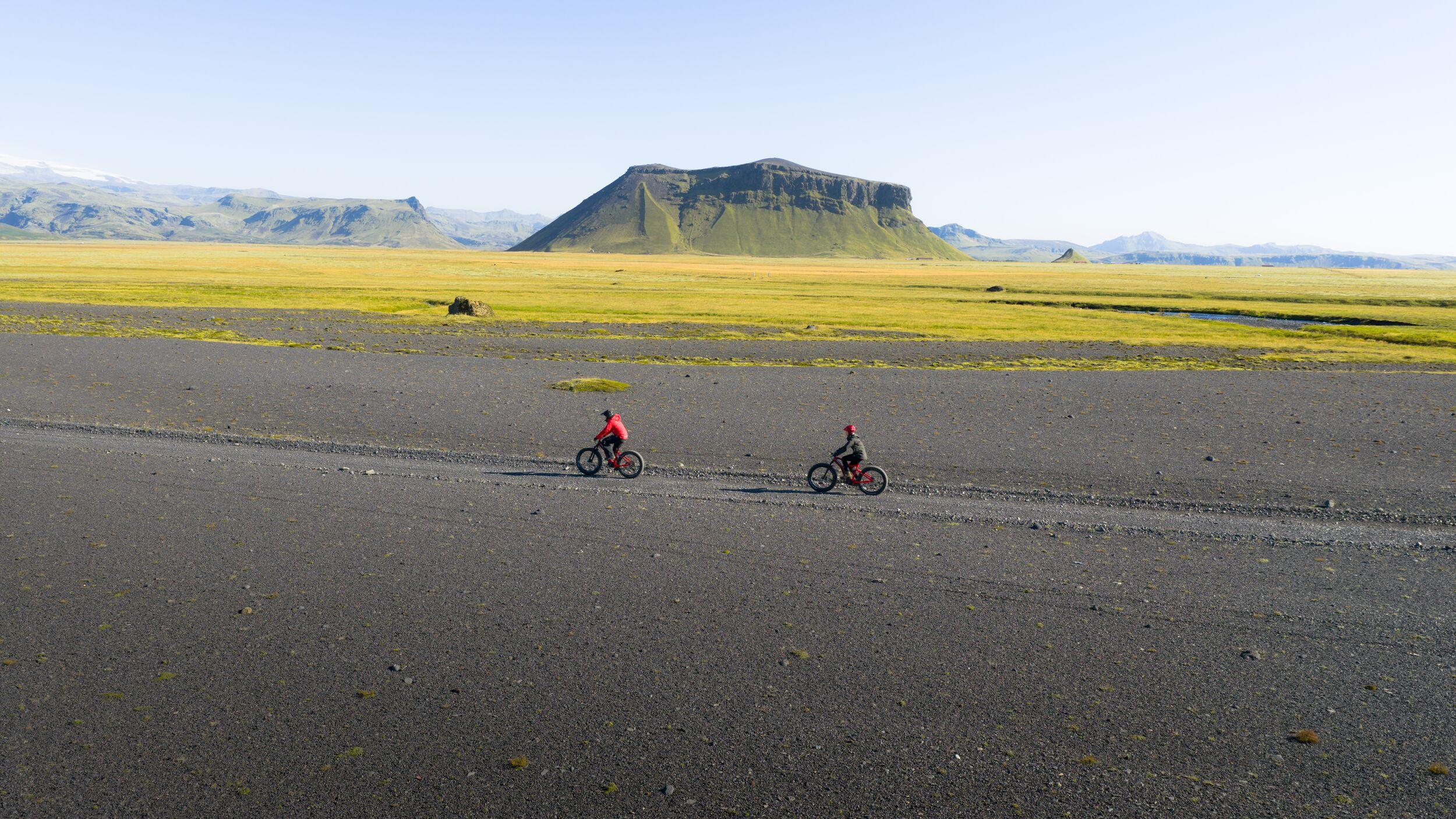
South Coast & E-Bike to the Plane Wreck
Join our bestselling South Coast tour and add an E-bike adventure to the DC-3 plane wreck on the black sands of Sólheimasandur.

South Coast & Sólheimasandur DC-3 Plane Wreck Black Beach ATV Adventure
Explore Iceland's legendary South Coast, where the thundering cascades of Seljalandsfoss and Skógafoss await. Amidst the shadow of the mighty Katla volcano, feel the thrill of an ATV ride across scenic valleys and black sand expanses, leading you to the iconic DC-3 plane wreck on Sólheimasandur beach. A harmonious blend of tranquil vistas and heart-pounding adventure!

- Multiday Tour
Iceland On a Budget - 7 days
Explore Iceland’s breathtaking landscapes, geothermal hot springs, and volcanic wonders on this 7-day (6 nights) Iceland on a Budget package. See the geysers and waterfalls of the Golden Circle, marvel at the black sand beaches of the South Coast, and discover Reykjavík’s cultural landmarks with a Hop-On Hop-Off city pass. Relax in the serene geothermal pools of Hvammsvík and step inside a real lava tunnel, where you’ll walk through Iceland’s volcanic history. With affordable travel, carbon-neutral transfers, and expert local guides, this package provides a budget-friendly way to experience Iceland’s best sights.

ATV - Black Beach Safari and the Plane Wreck
Looking for an active tour in south Iceland? Get an adrenaline rush while riding an ATV on vast black sand beaches! This thrilling 2-hour guided tour includes breathtaking views of the surrounding area and a visit to the Sólheimasandur Plane Wreck.

Plane Wreck Shuttle
Hop aboard the Plane Wreck shuttle for the 4 km (2.5 mi) to the DC-3 aeroplane wreckage on the hauntingly beautiful black sand beach of Sólheimasandur. The shuttle is available seven days a week between 10:00 and 17:00 and takes just 10-15 minutes to get to the plane!

Volcanic Wonders with Grindavik Visit
Once a bustling fishing village, Grindavík now serves as a stark reminder of nature’s relentless power. After a recent volcanic eruption forced the evacuation of its residents, much of the town remains uninhabitable, its landscape forever marked by the destructive forces of the earth.


